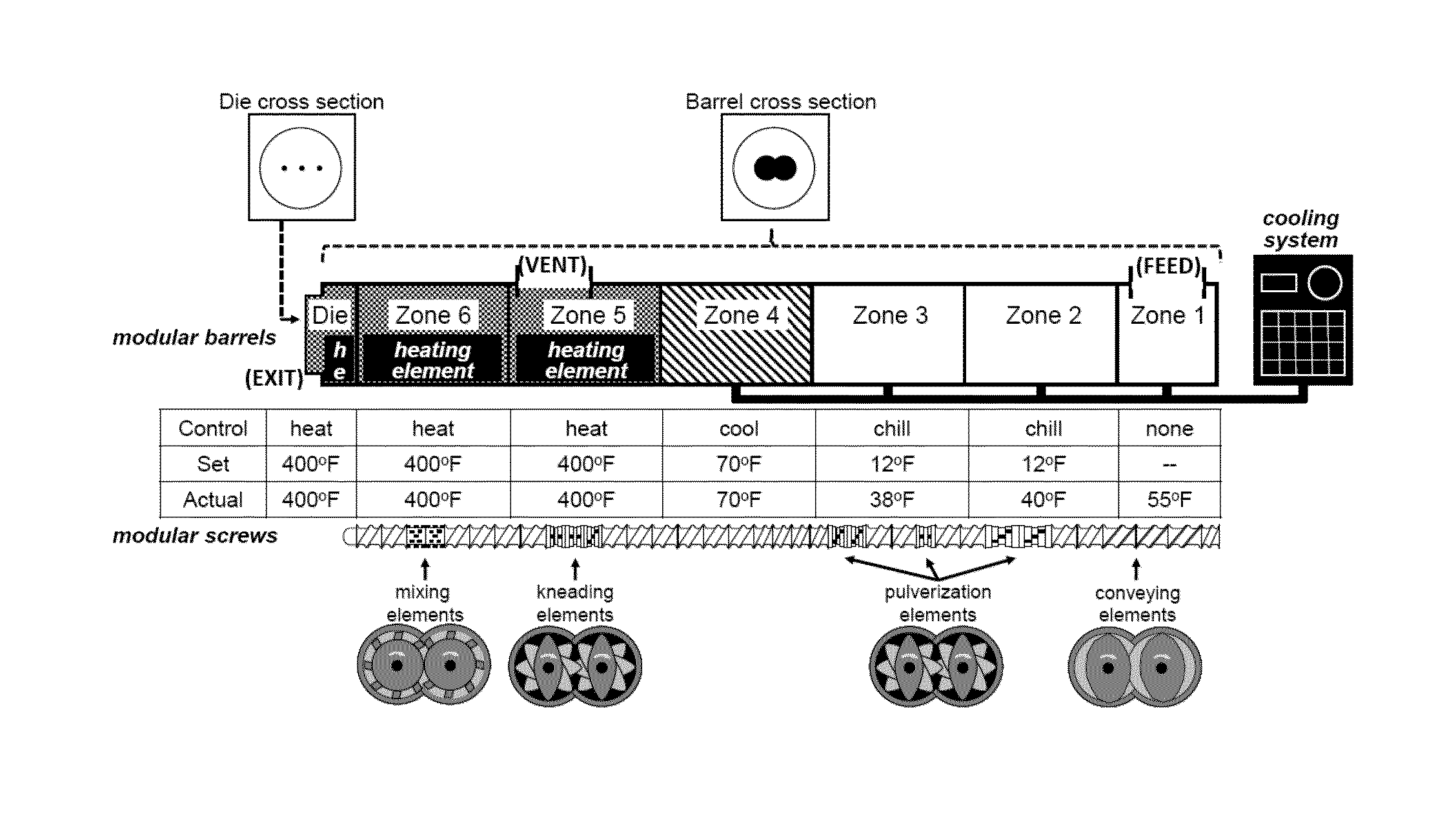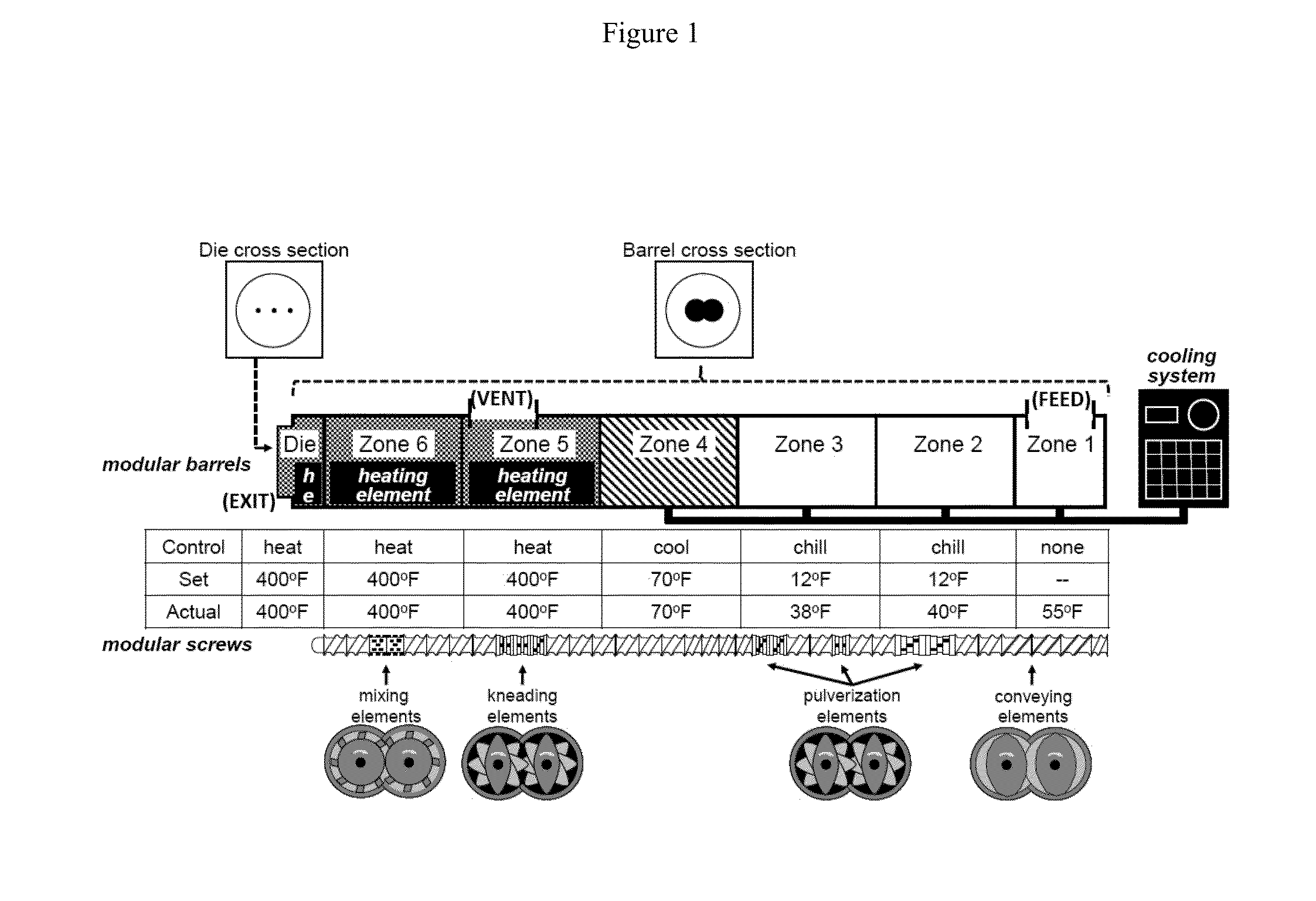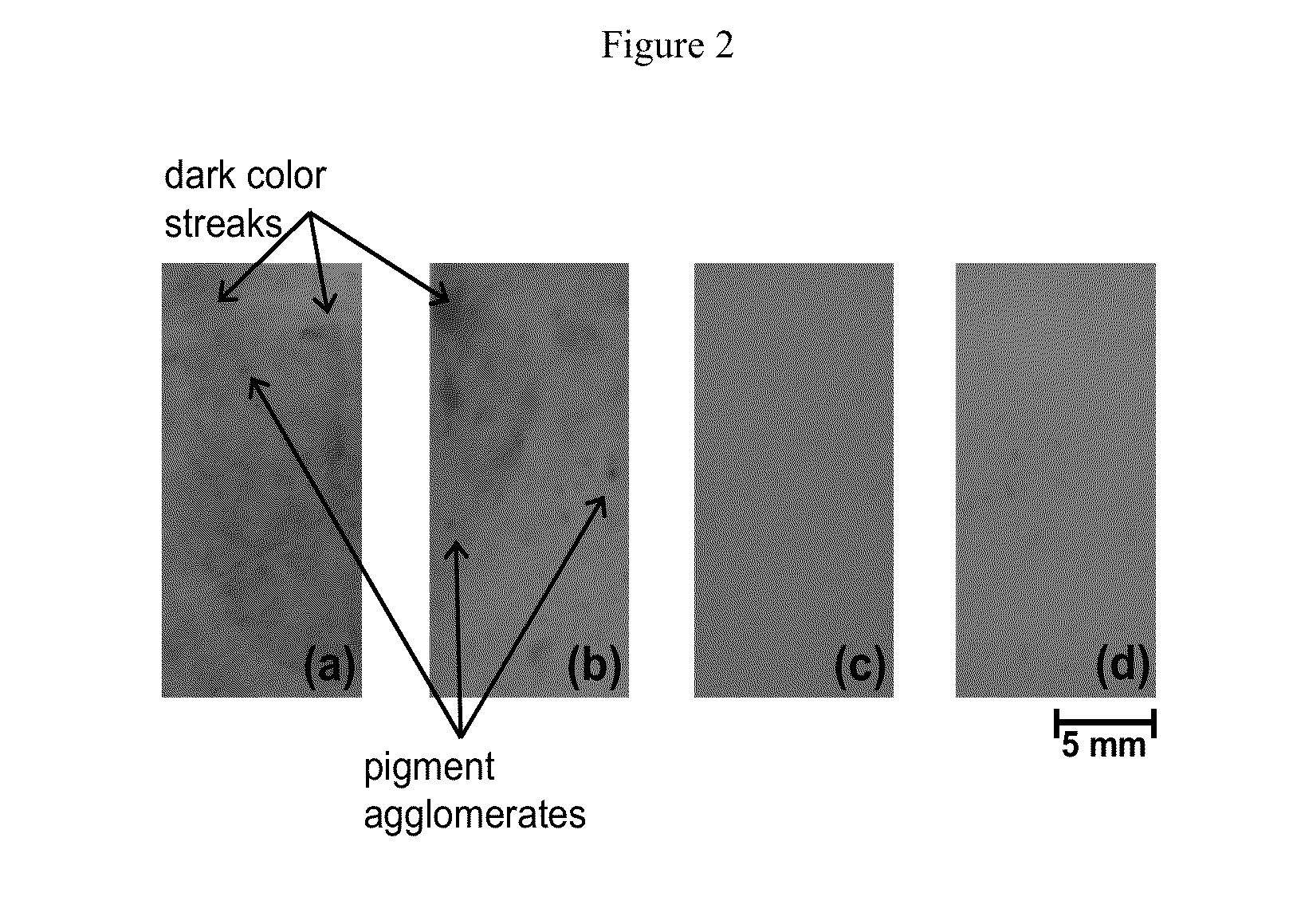Method for processing polymers and/or polymer blends from virgin and/or recycled materials via solid-state/melt extrusion
- Summary
- Abstract
- Description
- Claims
- Application Information
AI Technical Summary
Benefits of technology
Problems solved by technology
Method used
Image
Examples
example 1
[0054]This invention can be used in conjunction with various polymer materials such as those described in U.S. Pat. No. 6,797,216, the entirety of which is incorporated herein by reference. For instance, as would be understood by those skilled in the art and made aware of this invention, various amounts and / or proportions of post-consumer / post-industrial polymeric scrap material, virgin material, and blends thereof (e.g., binary, ternary, and quaternary, etc. blends of different polymers or a polymer from multiple sources), as illustrated in the '216 patent, can be processed in accordance with one or more embodiments of the present SSME methodology.
example 1a
[0055]Chopped polypropylene (PP), high-density polyethylene (HDPE) or low-density polyethylene (LDPE) scrap flakes, as described in the '216 patent (e.g., Examples 1-3 thereof), can be used in conjunction with the present methodology without undue experimentation.
example 1b
[0056]Blends of chopped HDPE, LDPE, and PP scrap material, as described in the '216 patent (e.g., Example 4 thereof), can be used in conjunction with the present methodology without undue experimentation.
PUM
 Login to View More
Login to View More Abstract
Description
Claims
Application Information
 Login to View More
Login to View More - R&D
- Intellectual Property
- Life Sciences
- Materials
- Tech Scout
- Unparalleled Data Quality
- Higher Quality Content
- 60% Fewer Hallucinations
Browse by: Latest US Patents, China's latest patents, Technical Efficacy Thesaurus, Application Domain, Technology Topic, Popular Technical Reports.
© 2025 PatSnap. All rights reserved.Legal|Privacy policy|Modern Slavery Act Transparency Statement|Sitemap|About US| Contact US: help@patsnap.com



